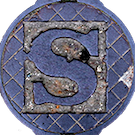Konrad Hinsen
| Konrad Hinsen | |
|---|---|
| Timezone | CET (GMT+01:00/GMT+02:00) |
| Homepage(s) | http://khinsen.net/, https://science-in-the-digital-era.khinsen.net/ |
| Institutional Affiliation(s) | CNRS |
| Relevant Projects | Leibniz
|
| Group(s) | Table 1, Interfaces, Discourse Modeling, Computable Graphs, Synthesizing Social Media, Interdisciplinary Models |
| Table Assignment | Table 1
|
| ORCID | 0000-0003-0330-9428 |
| Twitter Handle | khinsen |
| Mastodon/Fediverse Handle | https://scholar.social/@khinsen |
| GitHub handle | khinsen
|
Discord
Page Schemas#Creating a new Schema Page schemas is mostly a handy way to generate boilerplate templates and link them to semantic properties. A Form (using Page Forms is something that is an interface for filling in values for a template.
For an example of how this shakes out, see Category:Participant Template:Participant Form:Participant
- go to a `Category:CategoryName` page, creating it if it doesn't already exist.
- Click "Create schema" in top right
- If you want a form, check the "Form" box. it is possible to make a schema without a form. The schema just defines what pages will be generated, and the generated pages can be further edited afterwards (note that this might make them inconsistent with the schema)
- Click "add template" If you are only planning on having one template per category, name the template the same thing as the category.
- Add fields! Each field can have a corresponding form input (with a type, eg. a textbox, token input, date selector, etc.) and a semantic property.
- Once you're finished, save the schema
- Click "Generate pages" on the category page. Typically you want to uncheck any pages that are already bluelinks so you don't overwrite them. You might have to do the 'generate pages' step a few times, and it can take a few minutes, bc it's pretty buggy.
Workshop Submission
What's your interest in this workshop?
With what "frame" do you approach the workshop? (or identity)?
Practitioner, Tool-builder
What materials can you contribute to the workshop for consideration?
"Computational science: shifting the focus from tools to models" https://f1000research.com/articles/3-101/v2 An in-detail explanation of the problem, with an outline of a solution, written in 2014 before I actually started working on my prototypes.
"The structure and interpretation of scientific models" http://blog.khinsen.net/posts/2020/12/10/the-structure-and-interpretation-of-scientific-models/ A blog post explaining why computational models are, in general, specifications rather than algorithms.
"Verifiability in computer-aided research: the role of digital scientific notations at the human-computer interface" https://peerj.com/articles/cs-158/ A report on the first iteration of Leibniz, written in 2018.
"Liberating computational science from software complexity" https://www.youtube.com/watch?v=YbznItQpALo&t=2104s A recorded talk at RacketCon 2020, with a motivating introduction and a demo of the first iteration.
"Using Glamorous Toolkit for Scientific Notation" https://www.youtube.com/watch?v=f10NpsMmbis A first demo of the second iteration, in discussion with Tudor Girba, the chief architect of the platform I chose to build on.
And, of course, the code: https://github.com/khinsen/leibniz-pharo
Organizer-estimated Topics
Research Data, Reproducibility, Federation, Gradual Enrichment, Documents, Wikis, Knowledge Graphs, Transdisciplinarity, Scientific Publishing
